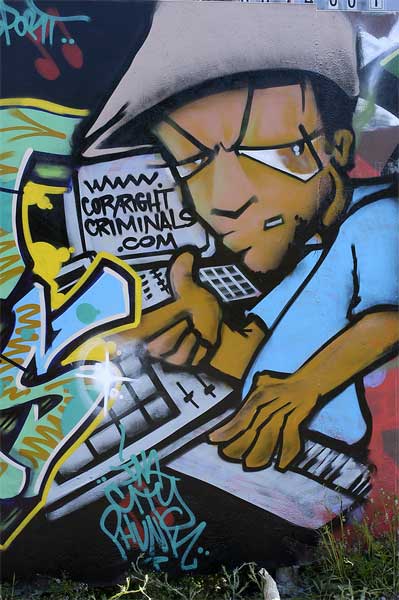I just viewed Ari Marcopoulos' exhibition Architectures at the New Orleans Museum of Art. According to the NOMA's website, the exhibit is described as-
A special exhibition of xerox and laser-jet prints...Ari Marcopoulos: Architectures will be the first in the _museological exhibition series curated by Diego Cortez, The Freeman Family Curator of Photography.
Based on my observations, it was a room full of institutional critique. The near meter-length wide predominately black and white photos were printed on paper and tacked to the gallery walls with pins. The images were familiar, knowable scenes of youth culture, skateboard ramps, graffiti, and cityscapes, printed on humble materials without the recently popularized hyper-precision for which large format photography (I'm thinking of Gregory Crewdson's work, etc.) has become known. It's not the images alone that provide this institutional critique, it's the do-it-yourself didactic label text that Marcopoulos has added that grabbed my attention.
Marcopoulos has intertwined quotes from critical theorists and various other authors with his own philosophical musings in an effort to broaden the way learners define architectural photography to encompass graffiti (dialogue=structural) human bodies (flexible/mobile structures) architectural models (surrogate realities) among other photographic subjects. These sophisticated concepts are not clear in viewing the photographs alone. The key contextual piece (not found in the exhibition booklet) is the textual addition. This was an interesting component to this show that I felt embodied the "artist as curator" role that I have see in previous shows dealing with similar urban/global/culture as collage subject matter. The self-actualized artist as political and institutional critic resonates strongly with my own interests in reinventing the roles of art educators to encompass broader definitions of their practice as well as analyzing the museum as an institution and the role of education within that institution through the lens (literally and metaphorically) of train yard graffiti. That brings us to Paul D. Miller a.k.a. DJSpooky.
Dj Spooky and Q*bert Copyright Criminals Graf Wall by Twick and Buder from the ICP Crew "Tire Island" in San Francisco at the end of 24th St.
Lifted (perhaps appropriately) straight from his personal page-
Paul D. Miller is a conceptual artist, writer, and musician working in New York. In 2005, Sound Unbound, an anthology of writings on sound art and multi-media by contemporary cultural theorists followed his first publication, Rhythm Science. Miller’s work as a media artist has appeared in a wide variety of contexts such as the Whitney Biennial and The Venice Biennial for Architecture (year 2000).
Miller is less interested in critique of the museum, but he certainly seeks to critique social systems via his multimedia experiences. As DJ Spooky, his performances in museums are often well received by the young, hip, intelligentsia. He's capable of creating an engrossing experience while maintaining an expository message of societal disfunction.
My burning question for both of these artists (who have had artistic collaborations in the past, incidentally) would be:
Do these artworks create more than conversation and reflection? Further, is action/change in society an intended outcome of the artistic processes each of the artists enact?
I ask these questions in response to the abstract and sometimes esoteric nature of the artistic content. In Marcopoulos' case, I understand his didactics and the art historical basis for his creative processes, but I wondered (as a liminal space interpretive border-crosser) who the intended audience was, and what Marcopoulos' intentions for the outcome of that audience's interactions were.
Similarly, I can't help but wonder if DJ Spooky's Antarctic ice music will facilitate ecological awareness or if his book Rhythm Science will prompt readers (whomever they may be) to read W. E. B. Dubois, Emerson, or Joyce, or if there's any overt educational intent at all.
Why should that matter at all, you may ask. I don't know that it does, directly. Within the context that both of these artists have successfully bridged the gaps between-artist as curator-street/urban culture-art as activism/institutional critique-I tip my hat to them. I am curious about the role of the educator in this equation. Does artist/researcher/practitioner fit into another gap to bring the messages of these artists to a wider audience?
Are educators DJ's too?
Friday, April 4, 2008
Ari Marcopoulos and Paul D Miller: institutional critique re-mix
Posted by
Lillian Lewis
at
4/04/2008 09:30:00 AM
![]() 3
comments
Labels:
ABER,
artists,
DJSpooky,
Marcopoulos,
metaphor,
museum
3
comments
Labels:
ABER,
artists,
DJSpooky,
Marcopoulos,
metaphor,
museum
Subscribe to:
Comments (Atom)

